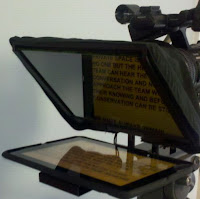 |
| Faith Ringgold, portrait by Grace Matthews |
Ringgold tells Stamberg that she started out as a landscape painter in the '60's, but was persuaded by a gallery owner to use her art to reflect the social upheaval and violence of that time. (Her work from the late 1960's is on exhibit now at the National Museum of Women in the Arts in Washington, D.C.) But her canvasses showed "Too damn much," she says. When she finally started putting her art on quilts, and adding narrative structure, she hit on something special that audiences responded to, and it was not just their comfort level with the medium. "I think it had a lot to do that it was a familiar medium and people liked stories. They like them. Yes. I think I had struck on a combination of imagery and politics that worked and people said OK."
It is true that we understand the world through story--I even blogged about it, see The Power of Story. And story can also be a balm. In Rx Storytelling I discuss the importance of connectional narrative.
But Ringgold relates story to scope and organization. Her paintings were more abstract, open to interpretation, showing us what the artist saw and felt, but not letting the viewer discover the truth for her/himself. "And I think that it had something to do with the fact that paintings people really don't understand. They don't understand how big - they don't really get paintings-" Ringgold reached some big conclusions in her paintings, and her audience didn't always get there with her, because they were coming in at the end of the story. In her quilts, she can make statements that are every bit as bold and provocative, but the viewer/audience has joined on the journey, and so understands.
I think this is a useful image for us to keep in mind whenever we speak. Because we always have a greater chance of reaching understanding when we make sure our conversation partners have heard the whole narrative arc. We do forget, though. But thinking of Ringgold and her "quilt epiphany" might help each of us remember that no one can read our mind: we must express ourselves, however imperfectly, with the tools we have at hand.
